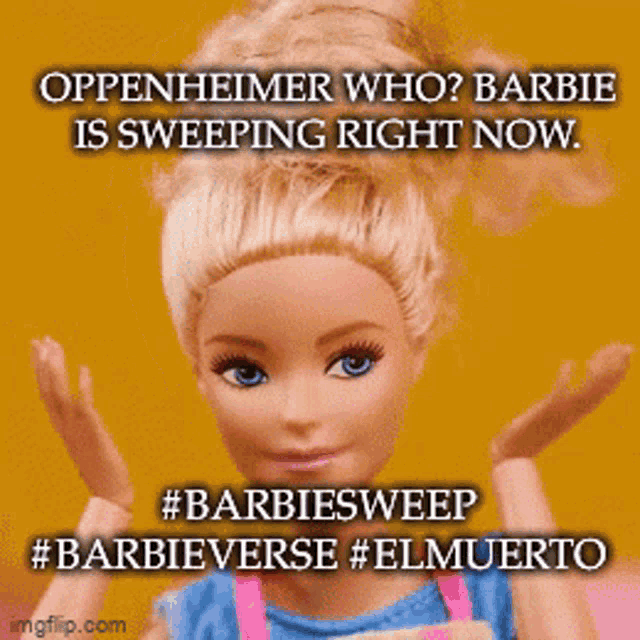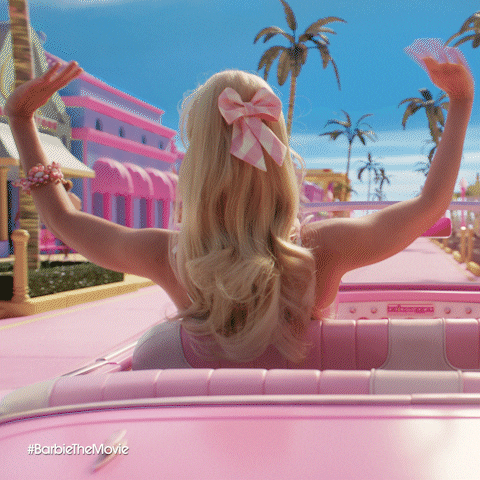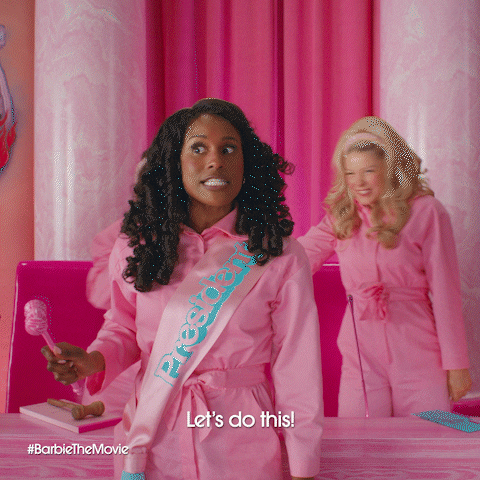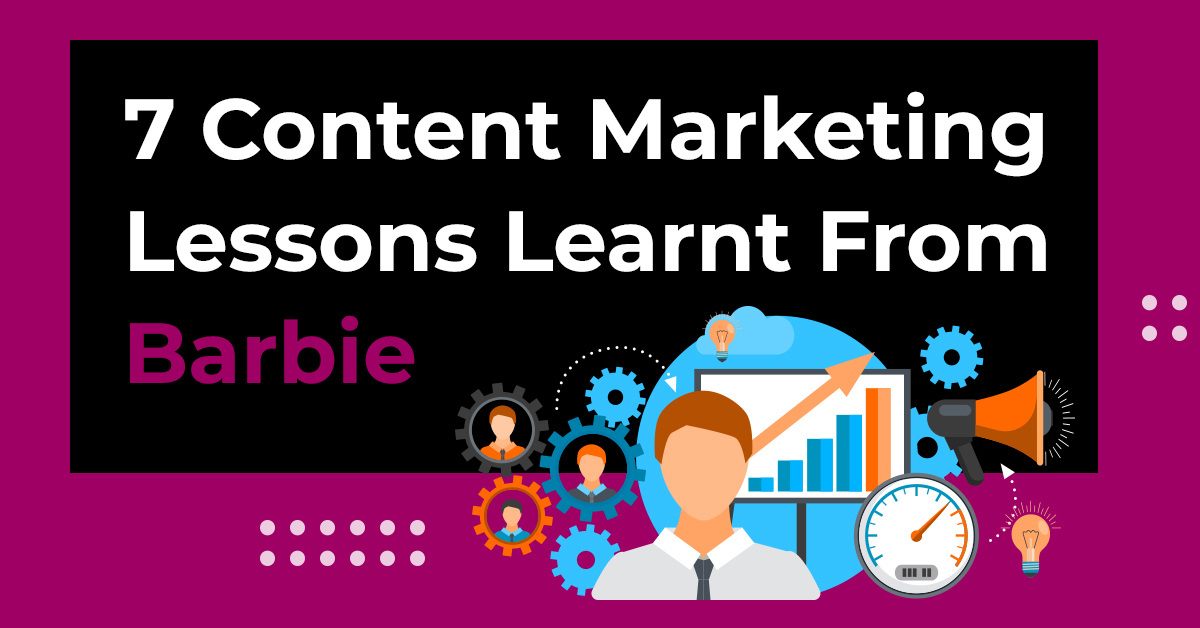The history and the cultural legacy of the world’s most famous doll is such that it needs no introduction. A global sensation for more than six decades, Barbie dolls are found on shelves in almost every country and more than 100 dolls are estimated to be sold every minute worldwide.
Since her debut in 1959, Barbie has been instrumental in shaping American culture in several ways. The civil rights movement and evolving conceptions of gender are some examples of how the iconic doll – an independent professional in a time period when American women struggled to own independent bank accounts, let alone be pilots and doctors – has managed to influence society and culture.
Despite Barbie’s enduring legacy and massive popularity worldwide, why did the humongous success of the recently released “Barbie” movie come as a shocker to the film industry and trade pundits? You can find the term “Shocking success” in almost every article that speaks about the film’s box office success. Let’s find out.

Why Is the Barbie Movie’s Success Unexpected?
One main reason why people are surprised by the movie’s success is that the staggering numbers that “Barbie” managed to make at the worldwide box office are almost on par with some mega-budget superhero movies. Why should this be surprising? When trade pundits, movie experts, and common audiences ask themselves this question, they should be able to hear an inner voice echoing one word: “Misogyny”. Barbie has always been expected to conform to certain standards, like all real women.
The common wisdom remains that women-centric films with overt feminist messages, especially ones made by women, don’t perform well. What really worked for the movie (apart from the entertainment factor, of course) and contributed to its record-breaking success is that it questioned a conservative and regressive mindset of society by championing more diversity and inclusion through its storyline. This clicked with modern society big-time. “Barbie” gained such wide acceptance that even Christopher Nolan’s “Oppenheimer,” a major work by one of the most popular directors of our generation, which was released on the same day, had to play second fiddle to the iconic doll.

What are the Content Marketing Lessons That Marketers Can Learn From Barbie?
If you tell movie fanatics that “Barbie” succeeded because it is a wonderful film, they will give you a list of classic films (a long list) that failed at the box office. So, what made Barbie stand out? The promotional campaign of course. The quality of the movie is top-class, but the movie became a humongous success because it was watched by millions worldwide obviously. A well-planned and well-implemented promotional campaign – along with growing word-of-mouth – was the reason why it reached a wide audience.
As a marketer or business owner, there are several content marketing lessons you can learn from this movie and implement them for your own business to achieve your desired goals. Here are seven of them.

7 Marketing Lessons to Learn from the Barbie Movie’s Promotional Campaign and Storyline
#1. Create a Good First Impression
Source: Sealskincovers
The first impression is the last impression, and you get only one chance to create that good first impression. Barbie succeeded at that by creating an impressive first trailer. The colorful Barbieland sets and dance sequences were visually appealing; however, the main focus of the trailer was centered on Barbie’s introduction to the world of dolls.

This is an important lesson for content marketers. In their attempt to make something visually appealing, they usually end up deviating from their main focus – what their product or service is about. It is important to have interesting visuals; however, they should be relevant to what you offer.
Everything shown in Barbie’s first trailer was relevant to the main storyline, unlike many other films that show something different in their trailers, something that’s not relevant to the main plot, just to capture the audience’s attention. This is misleading, and in all likelihood, it could result in failure.
#2. Ensure that Your Content is Interesting, Informative, and Engaging
Another brilliant aspect of the trailer was that it was captivating and engaging. Similarly, you need to ensure that your website landing page where the users land first is interesting and engaging. This can be achieved by having a catchy title, as it is the first thing users notice when they enter your page. The content should not be “all text” without visuals. You should make sure to include captivating visuals.
If you plan on creating a video instead of a writing piece, ensure that the main feature of your product or service is highlighted within the first eight seconds.

Source: Sealskincovers
Beyond just the trailer, the movie itself was also appreciated for its engaging screenplay. Remember, a quick-paced, compelling narrative can make a long article feel short and interesting, while a slow, dull narrative can make even a short article feel like a 100-page case study. So, you should craft a compelling narrative to make it interesting for your target audience. More importantly, it will ensure that your content resonates with your target audience.
#3. Develop a Personal Connection with Your Audience

Source: Sealskincovers
The promotional team of the movie unveiled a free web tool, the “Barbie Selfie Generator,” a few months before the release of the movie. The Barbie selfie generator tool makes use of artificial intelligence (AI) to transform an individual’s photo into a Barbie movie poster.
The fans who always wondered how their character might look like in Barbieland got the opportunity to find out, thanks to the team’s unique promotional strategy. Along with the image, people also had the option to type something about themselves by completing the sentence “This Barbie/Ken is …” This unique strategy created massive excitement among the audience, helping them develop a personal connection to the movie.
Similarly, as a marketer, you should think out of the box and create strategies through which people can develop a personal connection to your brand. Sending personalized emails is one of the best ways to develop a personal connection. Collect the basic details of your customers or prospects by asking them to fill out a form. Send them birthday wishes on their birthday and provide them with exciting offers and discounts. This is just one example. There are several ways you can connect with your audience through personalized emails and other strategies.

#4. Address and Resolve Your Audience’s Pain Points
Barbie’s marketing campaign was related to the movie’s message – questioning gender stereotypes and other stereotypes that exist in our society. Barbie is a very colorful movie and the movie’s main color theme is pink – a color that’s considered too girly by many across the world. The marketing campaign encouraged audience members of all genders to indulge in colors and aesthetics (just like the characters in the movie) that are typically considered weird, awkward, inferior, or silly.
This brilliant marketing idea promoted self-love and body positivity, empowering people to not get bogged down by typical societal mindsets. Similarly, as a marketer, you need to identify the pain points of your target audience and create content that addresses and resolves their pain points.
#5. Harness the Power of Diversity

The Barbie brand is known for its commitment to diversity, equality, and inclusion and the movie is no different. The movie boasts of a talented, diverse cast that reflects today’s multicultural world. The makers also collaborated with influential figures, including Issa Rae (writer, producer, and actress) who embody diversity and inclusion. The movie’s approach to multicultural representation (collaborating with multicultural artists) created a perfect avenue for diverse audiences to feel represented and included.
Marketers should also harness the power of diversity by collaborating with influencers. Including different voices and perspectives can foster inclusivity, helping brands reach a wider audience.
#6. Be Authentic to Build Trust
The movie conveys several important messages to individuals and society as a whole, but the most important one is “staying true to yourself without giving in to societal demands”.
As a marketer, you should ensure that your content is genuine and authentic. In an attempt to oversell, marketers tend to include irrelevant points. When content is crafted only with the intention to generate leads and make sales, you will lose your audience’s attention right away. Always craft content with the intention of resolving your audience’s pain points.
Be transparent about your journey, success, failure, achievements, and lessons learned. This will build trust and credibility for your brand, and most importantly make it more relatable and authentic.
#7. Be Adaptable to Stay Ahead of the Curve
Change is the only constant in the world. The Barbie brand has evolved over time and this is one main reason why Barbie has remained relevant for more than six decades. Even in the movie, the character of Barbie keeps evolving by adapting to different situations quickly.
Marketers should adapt themselves to stay relevant in this quickly evolving world. They need to understand that change is inevitable. They should learn to stay adaptable in the ever-changing industry by embracing new technologies and strategies.
Final Thoughts
Studios should take inspiration from the Barbie movie’s successful promotional campaigns instead of copying them as it is. Imagine what would happen if a studio that is working on a dark thriller movie decides to have a colorful theme (inspired by Barbie) for their teaser, trailer, and other promotional campaigns. Undoubtedly, the result will be disastrous. (But, we have to admit, probably a little funny.)
You should analyze the promotional campaigns of your competitors that were successful and try to find out how they planned and implemented them. Based on your analysis, you should design your promotional campaigns that align with what you are trying to convey through your brand. You should ensure that your promotional campaigns remain relevant to your product or service.










